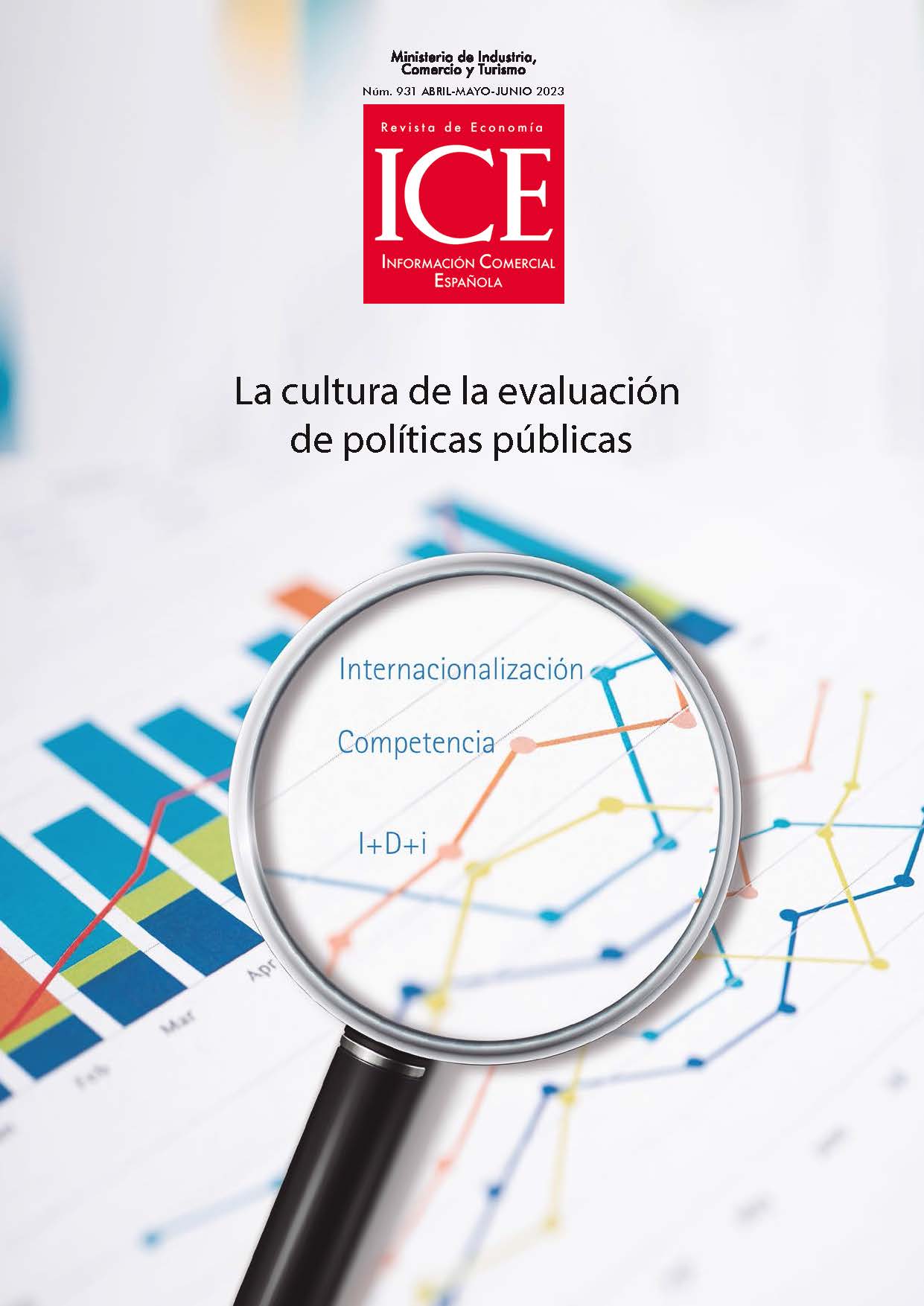Impacto de las intervenciones de la CNMC en defensa de la competencia: metodología y estimación para el período 2012-2022
##plugins.themes.bootstrap3.article.sidebar##
Descargas
##plugins.themes.bootstrap3.article.main##
Las evaluaciones de impacto son una necesidad para las autoridades de competencia, que necesitan cuantificar los beneficios para la sociedad que producen sus intervenciones. En este trabajo se analizan primero los diferentes tipos de evaluaciones que se pueden llevar a cabo con ese objetivo, y se describe después la metodología escogida para estimar el impacto de la actividad de la autoridad española. Esta metodología se dirige a estimar los ahorros directos generados por la persecución de infracciones anticompetitivas y el control de concentraciones al evitar los aumentos de precios que se hubieran producido sin esas intervenciones, y se ha aplicado a las decisiones de la autoridad española de competencia entre 2012-2022. Los ahorros estimados, aunque varían según los años, confirman que la actividad de defensa de la competencia es muy beneficiosa para los consumidores.
##plugins.themes.bootstrap3.article.details##
- Gonzalo Escribano Francés, Enrique San Martín González, Javier García-Verdugo Sales, José Mª Marín Quemada, La eficiencia energética en la ribera sur del Mediterráneo , ICE, Revista de Economía: Núm. 861 (2011): ECONOMÍA Y COMPETITIVIDAD EN EL ÁREA EUROMEDITERRÁNEA
- Christian Chase Solán, Javier García-Verdugo Sales, Joaquín López Vallés, Principios del análisis económico de los mercados digitales , ICE, Revista de Economía: Núm. 925 (2022): Plataformas digitales: regulación y competencia
- Enrique San Martín González, Javier García-Verdugo Sales, Análisis económico del cambio climático: de Kioto a Bali , ICE, Revista de Economía: Núm. 842 (2008): Economía de la energía
- Javier García-Verdugo Sales, Presentación , ICE, Revista de Economía: Núm. 876 (2014): 50 ANIVERSARIO DE LA PRIMERA LEY DE COMPETENCIA EN ESPAÑA
Allain, M. L., Boyer, M., Kotchoni, R., & Ponssard, J. P. (2013). Are Cartel Fines Optimal? Theory and Evidence from the European Union (CIRANO Working Papers No. 2013s-24). Centre Interuniversitaire de Recherche en Analyse des Organisations.
Boyer, M., & Kotchoni, R. (2015). How much do cartels overcharge? Review of Industrial Organization, 47(2), 119-153.
CMA. (2022). CMA impact assessment 2021 to 2022. https://www.gov.uk/government/publications/cma-impact-assessment-2021-to-2022
Combe, E., & Monnier, C. (2011). Fines against hard core cartels in Europe: The myth of overenforcement. The Antitrust Bulletin, 56(2), 235-275.
Connor, J. M. (2010). Price-Fixing Overcharges: Revised 2nd Edition (Purdue University Working Paper).
Davies, S. (2010). A Review of OFT's Impact Estimation methods (OFT Working Papers No. 1164). Office of Fair Trading.
Davies, S. (2013). Assessment of the impact of competition authorities’ activities. OECD DAF/COMP/WP2(2013)1.
Davies, S., & Ormosi, P. L. (2012). A comparative assessment of methodologies used to evaluate competition policy. Journal of Competition Law and Economics, 8(4), 769-803.
Deisenhofer, T., Dierx, A., Ilzkovitz, F., Stevenson, A., & Verouden, V. (2022). Customer savings generated by the Commission’s antitrust and merger enforcement: a 10-year perspective. Competition policy brief No. 1/2022. European Commission. Directorate-General for Competition. https://data.europa.eu/doi/10.2763/80601
Delgado, J., Otero, H., & Pérez-Asenjo, E. (2016). Assessment of antitrust agencies’ impact and performance: an analytical framework. Journal of Antitrust Enforcement, 4(2), 323-344.
Dijkstra, P., Kopányi, D., & van Dijk, T. (2022). Changes in the ACM outcome methodology. Traducción del original en holandés: Dijkstra, P., Kopányi, D., & van Dijk, T. (2021). Wijzigingen methodologie outcome ACM.
European Commission. (2015a). Commission Implementing Regulation (EU) 2015/207 of 20 January 2015, Annex III Methodology for carrying out the cost-benefit analysis (texto consolidado de 13 de marzo de 2021). http://data.europa.eu/eli/reg_impl/2015/207/2021-03-13
European Commission. (2015b). A review of merger decisions in the EU: What can we learn from ex-post evaluations? Directorate-General for Competition.
HM Treasury. (2018). The Green Book: Central Government Guidance on Appraisal and Evaluation.
Hüschelrath, K., & Leheyda, N. (2010). A Methodology for the Evaluation of Competition Policy. European Competition Journal, 6(2), 397-425.
Ilzkovitz, F., & Dierx, A. (2015). Ex-post economic evaluation of competition policy enforcement: A review of the literature. Publications Office of the European Union.
Ilzkovitz, F., & Dierx, A. (2020). Ex Post Economic Evaluation of Competition Policy: The EU Experience. Kluwer Law International.
Kemp, R., de Kleijn, H., Lamboo, E., Leliefeld, D., Postema, B., & Wolthoff, M. (2022). ACM Outcome Method for calculating the outcome of ACM (ACM Working paper No. 1). Association for Computing Machinery.
Kwoka Jr., J. E. (2013). Does merger control work? A retrospective on US enforcement actions and merger outcomes. Antitrust Law Journal, 78(3), 619-650.
Lianos, I., Jenny, F., Wagner-von Papp, F., Motchenkova, E., & David, E. (2014). An Optimal and Just Financial Penalties System for Infringements of Competition Law: A Comparative Analysis (CLES Research Paper No. 3/2014). Centre for Law, Economics and Society.
Lyons, B. (2016, August 5). The dangerously distorted incentives created by the CMA’s performance target. Competition Policy Blog. University of East Anglia-Centre for Competition Policy. https://competitionpolicy.wordpress.com/2016/08/05/the-dangerously-distorted-incentives-created-by-the-cmas-performance-target/
OCDE. (2014). Guide for helping competition authorities assess the expected impact of their activities.
OFT. (2010). A guide to OFT's Impact Estimation Methods.
Van Sinderen, J., & Kemp, R. (2008). The Economic Effect of Competition Law Enforcement: The Case of The Netherlands. De Economist, 156(4), 365-385.
Werden, G. J. (2008). Assessing the effects of antitrust enforcement in the United States. De Economist, 156(4), 433-451.


